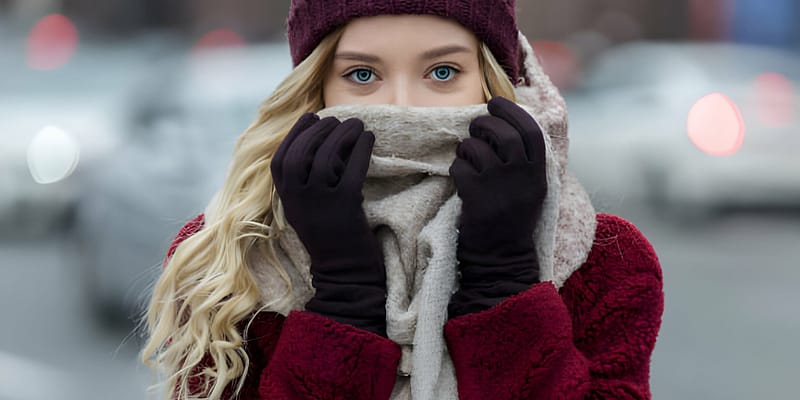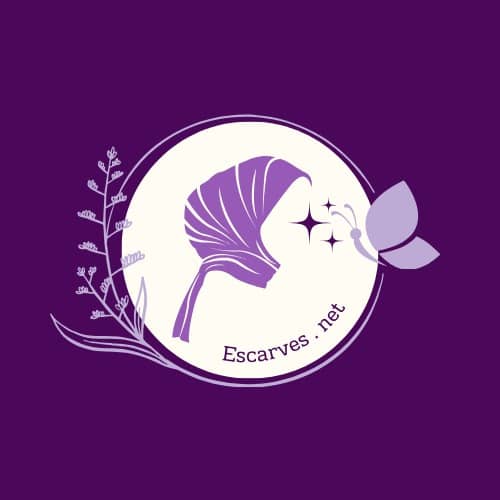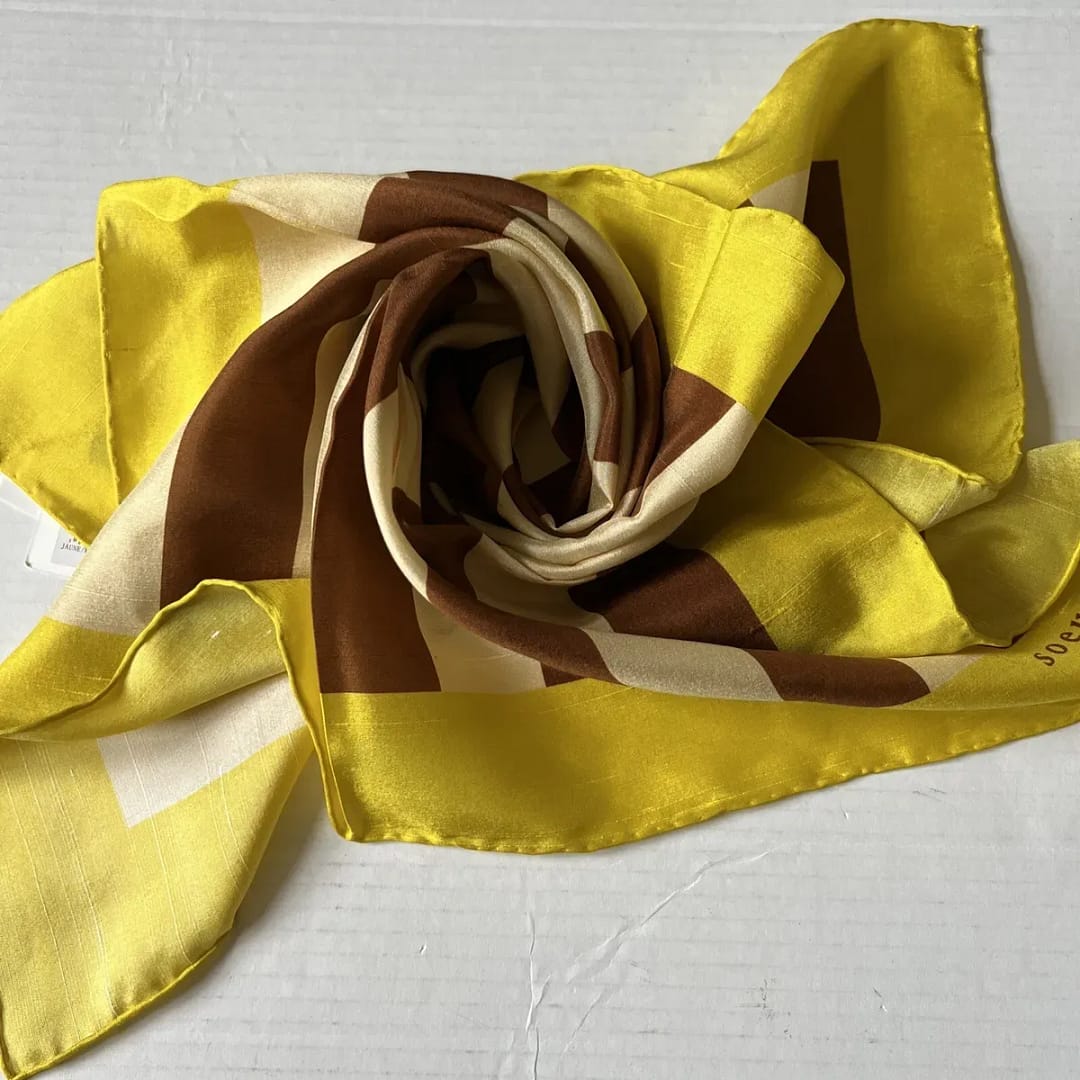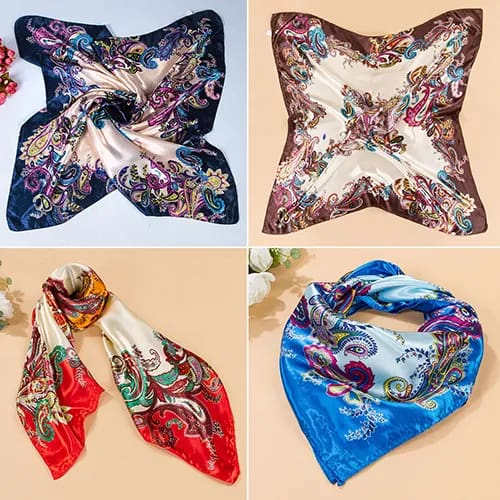When the chill of winter approaches, the wool scarf emerges from closets and drawers to play a pivotal role in both fashion and frostbite protection. This humble accessory is so much more than just a fabric loop around the neck — it’s a testament to history, a statement of style, and even a silent flag for ethical fashion virtue. In this comprehensive guide, we unfurl the narrative behind wool scarves, exploring their deep connection to fashion, sustainability, and personal expression.
History of Wool Scarves
Did you know that wool scarves have a history as rich and cozy as the scarves themselves? It’s true! These versatile accessories trace their origins back centuries and have been warming the shoulders of the fashion-forward and the practical alike for generations. Initially, scarves were used by warriors and soldiers to keep warm during cold nights and long battles. Interestingly, they also served as rank indicators in some ancient civilizations!
Fast forward to the 19th century, and wool scarves began to make a significant mark on the fashion industry. They were no longer just pragmatic; they became emblematic of style and sophistication. Designers started incorporating fine wool from various sources, like cashmere from the Kashmir region, to craft scarves that weren’t just warm but also incredibly soft and luxurious.
Today, this narration of style woven into functionality continues. Wool scarves stand out as a timeless accessory, effortlessly bridging the gap between historical tradition and modern ethical fashion. They’re not only about keeping you warm; they’re about making a statement that you care — about style, about history, and importantly, about sustainability. Isn’t that something wonderfully warm to wrap around you?
Benefits of Wool Scarves
Wool scarves are not just about keeping the winter chills at bay; they come with a bouquet of benefits that make them a beloved accessory in any wardrobe. Firstly, the natural properties of wool offer unmatched warmth and breathability, making them perfect for both cool autumn breezes and the harsh winter air. Wool’s ability to regulate temperature means you stay comfortable, no matter the weather outside.
Beyond the practical, wool scarves add a splash of elegance and sophistication to any outfit. With a variety of textures, colors, and patterns available, they’re a fantastic way to express personal style and add a finishing touch to both casual and formal looks.
But perhaps the most heartwarming benefit of all is wool’s sustainability. Wool is a natural, renewable fiber that biodegrades much faster than synthetic alternatives. Choosing a wool scarf means making a positive impact on the environment, supporting ethical fashion, and promoting animal welfare. It’s a simple accessory that speaks volumes about your commitment to a greener, more sustainable world.
In wrapping up, wool scarves are more than just a seasonal accessory; they’re a statement of care — for oneself, for style, and for the planet.
Types of Wool Used in Scarves
There’s a whole world of wool out there, each type bringing its own story and qualities to the cozy scarves we love so much. Here’s a friendly introduction to the stars of the show in the world of wool scarves.
- Merino Wool: Meet the softie of the wool family! Merino wool, sourced from Merino sheep, is celebrated for its super fine fibers that make scarves soft enough to snuggle your neck without that itchy feeling. It’s perfect for those who cherish warmth and comfort but insist on a lightweight feel.
- Cashmere: Ah, the luxurious one! Cashmere is the plush darling of the fashion world, known for its incomparable softness and elegant sheen. Sourced from cashmere goats, these scarves are a bit of an investment but promise warmth, softness, and a dash of opulence like no other.
- Lambswool: Fresh and oh-so-cozy! Lambswool comes from the first shearing of a young sheep, offering a softer, more hypoallergenic option. Scarves made from lambswool are wonderfully warm and are often more affordable than their cashmere cousins, making them a popular choice for everyday luxury.
- Alpaca: The friendly and fluffy choice! Alpaca wool is known for its thermal properties, silky texture, and less-prickly feel. Alpaca scarves are incredibly warm and come in a variety of natural colors, offering a unique and environmentally friendly option for staying cozy in style.
Each type of wool brings its own special blend of warmth, weight, and texture to the table, making the quest for the perfect wool scarf an adventurous exploration of style and sustainability. Whether you lean towards the sumptuousness of cashmere or the everyday luxury of merino, there’s a wool scarf waiting to wrap you in warmth and style.
Wool Scarves: A Fashion Staple
Styling Tips for Different Occasions
Tying a wool scarf isn’t just about keeping warm — it’s a style statement. Learn the art of the Parisian Knot for a polished business look or a cascading wrap for an effortless day out. Pair your scarf with your favorite winter coat or even a blazer for a layer of sophistication. The possibilities are as varied as your winter itinerary.
Sustainability of Wool
Environmental Benefits of Wool
Amidst the growing conversation around sustainable fashion, wool stands as a beacon of eco-friendliness. Unlike synthetic materials, wool is biodegradable and renewable, presenting a clear edge in the climate crisis battle. Its natural insulation properties also mean you can turn down the thermostat and reduce your carbon footprint.
Ethical Considerations in Wool Production
Discover the heartwarming story behind your wool scarf. Sustainable practices mean sheep welfare isn’t just a passing thought but a central focus of the production process. From free-ranging to responsible breeding, ethical wool farmining ensures both a high-quality product and a conscience-clear outcome for the wearer.
Wool Scarves for Different Climates

No matter where you find yourself on the globe, there’s a wool scarf to match your climate and keep you fashionably comfortable. For those in the brisk breezes of coastal regions, a lightweight Merino wool scarf offers sufficient warmth without overwhelming you. Its breathability ensures you won’t overheat when the sun decides to peek from behind the clouds. In contrast, those braving the sharp, frosty winters of mountainous or northern areas will find solace in a thick, plush Cashmere scarf. Its superior insulation properties lock in warmth, making it an indispensable companion against the cold. For the unpredictable climates, where days may start chilly and warm up by noon, Lambswool scarves provide a happy medium. They’re easy to carry around and adapt well to fluctuating temperatures. Lastly, for those living in regions with a wet winter season, the Alpaca wool scarf is a standout with its water-resistant qualities, ensuring you stay dry and toasty amidst the drizzles and downpours. Each wool type caters to different needs, emphasizing wool scarves’ versatility as a global fashion staple adaptable to all kinds of weather.
Celebrity Style Inspiration
When it comes to elevating our winter wardrobe, who better to turn to for inspiration than our favorite fashion-forward celebrities? Their impeccable styling of wool scarves offers a wellspring of ideas for how to wear this timeless accessory. Emma Watson, known for her chic and sustainable fashion choices, has been spotted layering a classic Merino wool scarf over a trench coat, a look that screams sophistication with a dash of activism. Meanwhile, David Beckham showcases the versatility of Cashmere scarves by pairing them with both casual and formal attire, proving that comfort and class can go hand in hand. Zoe Kravitz embraces the bohemian rhapsody of Alpaca wool, mixing textures and patterns for an effortlessly cool vibe. And for a touch of royal elegance, Kate Middleton gracefully incorporates Lambswool scarves into her winter ensembles, demonstrating how a simple piece can add a layer of warmth and style. Drawing inspiration from these style icons, you can experiment with different ways to incorporate wool scarves into your outfits, blending your personal style with celebrity elegance.
Choosing the Right Wool Scarf
Types of Wool and Their Characteristics
Cashmere, merino, alpaca — each type of wool brings its own texture, softness, and warmth to the table. We decode the jargon and help you identify the right type of wool for your personal style and comfort.
Factors to Consider When Purchasing a Wool Scarf
When shopping for a wool scarf, it’s not just about the color or pattern. Weight, weaves, and even the feel of the fabric play a crucial role in your satisfaction post-purchase. Look for scarves that are substantial enough to weather the elements but gentle on your skin.
Wool Scarves for Outdoor Activities
Wool scarves are not only a fashion statement but also a practical accessory for outdoor enthusiasts. Whether you’re setting off on a brisk mountain hike, enjoying a serene walk in the park, or attending an outdoor winter festival, a wool scarf can be your best ally. For those adventurous souls braving the elements, a Merino wool scarf keeps you warm without compromising on breathability, perfect for strenuous activities where you might work up a sweat. If you’re more into leisurely outdoor pursuits, a soft Cashmere scarf can add a touch of luxury to your experience, providing unmatched warmth and comfort. For the eco-conscious explorer, Alpaca wool scarves are known for their durability and environmental friendliness, making them an ideal choice. Not to forget, the water-resistant properties of some wool scarves make them indispensable for anyone enjoying the outdoors during damp weather. Preparing for your next adventure means considering a wool scarf as part of your essential gear.
Styling Wool Scarves for Winter Wardrobe
Layering Techniques and Outfit Ideas
The layering game is strong with a wool scarf. Whether you’re bundling up for a winter hike or trying to add flair to your casual jeans-and-sweater combo, a wool wrap can tie everything together — literally.
How to Accessorize with Wool Scarves
Balance is key — if your scarf is your statement piece, keep other accessories minimal. Conversely, if you love your baubles and bangles, a simple, solid-colored scarf can be the perfect canvas.
DIY Wool Scarf Care Tips
Washing and Storing Wool Scarves
Proper care is the foundation of longevity for your wooly friend. We guide you through the washing and drying process, ensuring that your scarf stays pristine without the added shrinkage.
Extending the Lifespan of Wool Accessories
From moth deterrents to gentle storage, we share trade secrets that can help you cherish your scarf season after season. After all, a well-loved wool scarf tells not just your story, but the stories of every winter it has seen.
Conclusion
The cozy wool scarf isn’t just an accessory; it’s an ally in your battle against the elements and a friend to the environment. In a world where fast fashion often greets the recycle bin before the next season, wool stands out as a classic with a conscience. It’s time to celebrate this iconic piece for what it truly is: a sustainable fashion choice that brings warmth not just to our bodies but to the earth that nurtures us.
In wrapping up our exploration, invite your readers to don their finest wool scarves with a newfound appreciation for the craftsmanship and care behind their fibers. In every twist and tuck, there’s a nod to history, a vow to style, and a salute to a sustainable future. It’s not just a wool scarf — it’s a warm hug from Mother Nature herself, ensuring that, in the chill of winter, we’re never alone.
FAQs
Can wool scarves cause skin irritation?
While wool is a natural and gentle fabric, some people with sensitive skin may find certain types of wool, like coarse wools, to be a bit itchy. Opting for finer wools such as merino or cashmere can provide a softer, more comfortable wearing experience.
How often should I wash my wool scarf?
Wool is naturally resistant to dirt and odors, so you won’t need to wash it as often as other materials. A good rule of thumb is to wash your wool scarf at the end of the season before storing it away, or whenever it gets visibly dirty.
Are all wool scarves sustainable?
Wool is inherently more sustainable than many synthetic fibers, thanks to its renewable and biodegradable properties. However, the sustainability of a wool scarf also depends on how the wool is sourced and processed. Look for scarves from brands that prioritize ethical and eco-friendly practices.
Can I repair my wool scarf if it gets a snag or hole?
Absolutely! Wool lends itself well to repairs. Small snags can often be gently pulled back into place with a crochet hook or needle. More significant damage might require darning, a technique of weaving wool over holes to repair them. There are lots of great tutorials online to guide you through the process.
Is it worth investing in a designer wool scarf?
Investing in a high-quality wool scarf, designer or not, depends on your personal values and budget. Designer scarves often come with the assurance of superior wool quality and unique designs. However, many less-expensive brands also offer high-quality, stylish options that are ethical and sustainable. Evaluate what’s important to you—craftsmanship, brand, ethical practices—before making your decision.







